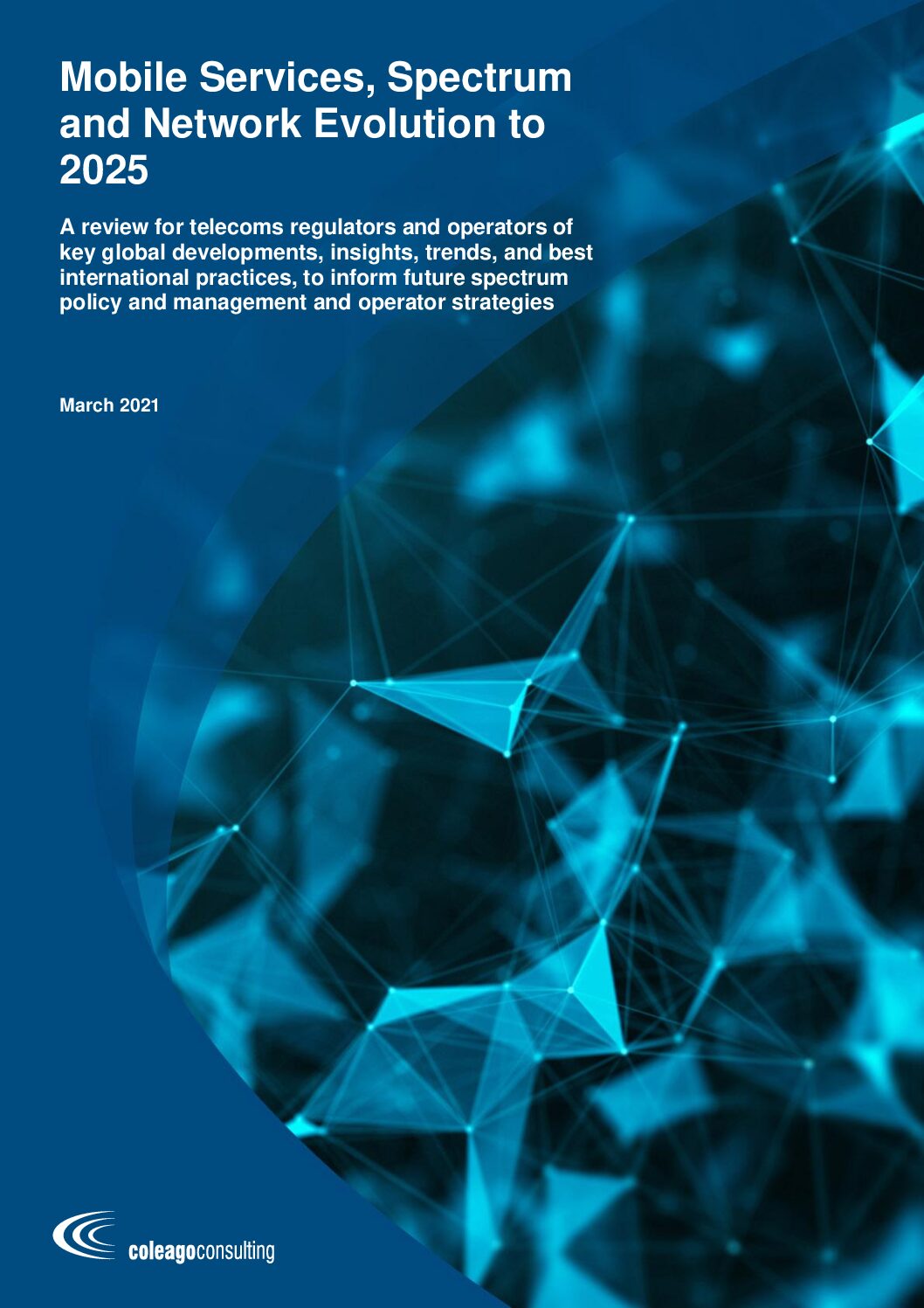Mobile Services, Spectrum and Network Evolution to 2025
Aimed at telecoms regulators and operators, a review of key global developments, insights, trends, and best international practices, to inform future spectrum policy and management and operator strategies.
This comprehensive report delves into the dynamic landscape of global mobile developments, focusing on key insights, emerging trends, and best practices internationally. With the primary audience being telecoms regulators and mobile operators, we aim to inform on spectrum policy, management strategies, and industry sustainability.

We consider the evolution of mobile services and applications, the adoption and consumption of mobile data services, and mobile network capacity requirements, and make projections to 2025 on a global and regional basis. We also consider the economic implications of the changing mobile landscape, both from a societal and an industry perspective.
Taking account of the evolution of mobile networks and technology over the 2020-2025 period, we estimate spectrum demand for a sample of developed and emerging markets. Finally, we explore the implications for spectrum management and pricing. We focus on the sustainability of the industry and of the socio-economic gains delivered by mobile communications.
Other insights

The Case for Strategic Spectrum Renewal
As spectrum licences approach their expiry date, a strategic approach to spectrum renewal is crucial. Traditional presumption of renewal in favour of incumbents may no longer serve the industry’s needs. Instead, a more strategic approach to renewal can optimise spectrum assignments and improve spectral efficiency by up to 40%.

Best Practice Spectrum Management
The principles of best practice spectrum management are well established and their implementation can enhance the socio-economic value of spectrum and how much operators are prepared to pay to acquire new spectrum. Whilst most regulators in developed markets have adopted best practice, the same cannot be said for developing markets. Coleago recently studied the regulatory environments in 16 African markets and recorded the extent to which best practice had been adopted.

Learning From Best Practice Spectrum Management in Botswana
The Botswana Communications Regulatory Authority conducted a review of its spectrum management strategy to align with international best practice. The Authority was advised by Coleago and in this paper, Project Director Graham Friend highlights the lessons to be learned for other regulators in developing markets.

The End of Telecoms History? – Not Quite!
At the European 5G conference, Stefan Zehle highlighted that differences in mobile data usage across countries result from variations in price and network availability. While European policymakers celebrate 89% 5G coverage, gaps in both outdoor and indoor connectivity limit usage. William Webb’s prediction that data traffic will plateau at 20 GB per user per month by 2027 seems unlikely, given that top users already exceed 100 GB. To fully realise 5G’s potential, policymakers must address these coverage issues in a cost-effective manner.

Insights from a Strategic Spectrum Review
The mobile industry has accumulated a fragmented spectrum portfolio, consisting of various frequency bands that are sub-optimally allocated for modern technologies like 4G and 5G. As operators transition from legacy technologies such as 2G and 3G to newer, bandwidth-intensive solutions, the need for contiguous spectrum blocks has become critical.

The End of Telecoms History? Not Really
In his book The End of Telecoms History, William Webb uses extrapolation of mobile data usage growth curves to claim that mobile data user requirements are nearly met
and that we have all we need
. He predicts mobile data usage to plateau at around 15-20 Gbytes/user/month
. Webb claims that no further investment in 5G capacity is needed and that the only remaining problem is ubiquity, notably in-building coverage. This article provides evidence that, while the author makes some good points, his analysis with regards to mobile data usage is flawed and hence the conclusions he draws are quite wrong.